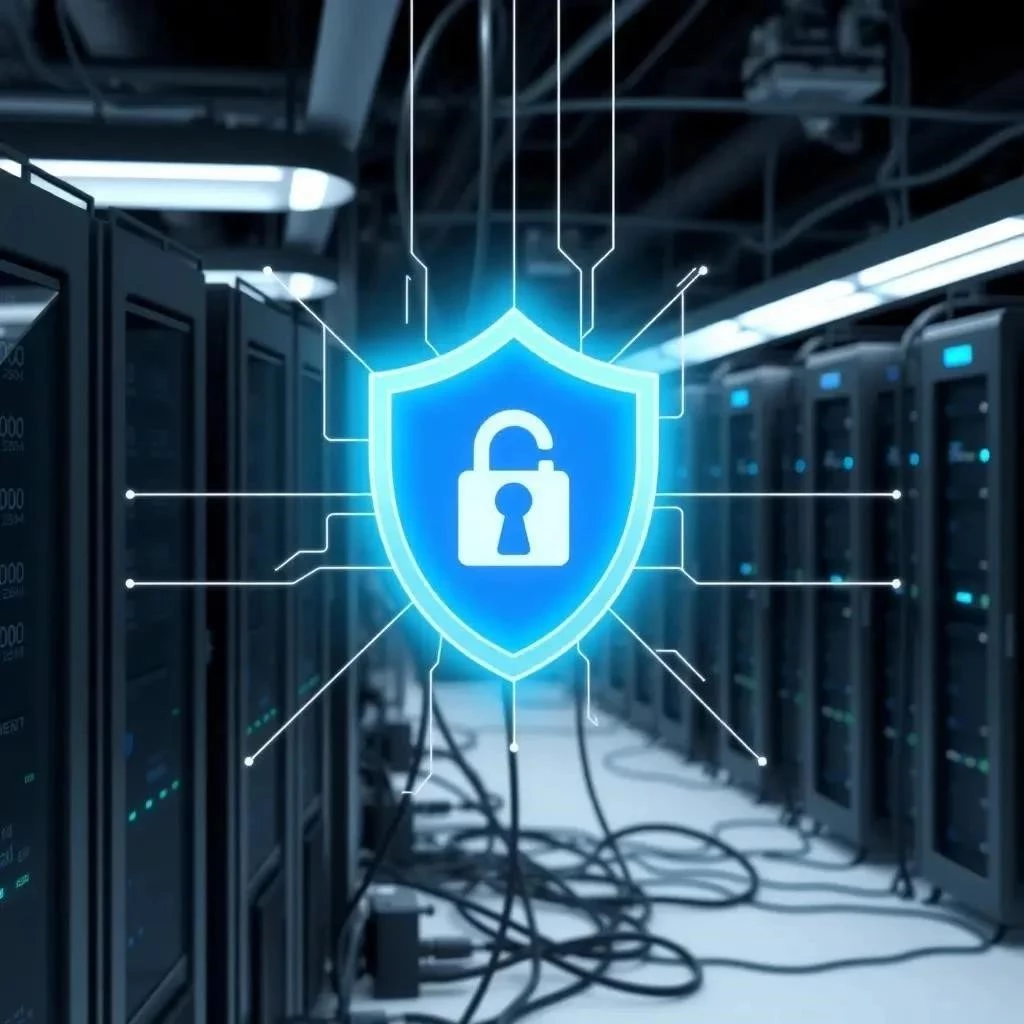In today’s interconnected world, cybersecurity is no longer an option, but a necessity for businesses of all sizes. A single cyberattack can cripple operations, damage reputation, and lead to significant financial losses. Proactive measures are crucial to protect sensitive data and maintain customer trust. This article outlines eight essential tips to strengthen your business’s cybersecurity posture and mitigate potential threats. Implementing these strategies will significantly reduce your vulnerability to cyberattacks and ensure the long-term security of your organization.
Understanding the Cybersecurity Landscape
Before diving into specific tips, it’s important to understand the threats facing businesses today. These include:
- Malware: Viruses, worms, and trojans designed to infiltrate and damage systems.
- Phishing: Deceptive emails or messages that trick users into revealing sensitive information.
- Ransomware: Malware that encrypts data and demands a ransom for its release.
- Denial-of-Service (DoS) Attacks: Overwhelming a system with traffic to disrupt its availability.
- Insider Threats: Security breaches caused by employees or contractors.
8 Practical Tips to Enhance Your Business Cybersecurity
- Implement Strong Passwords and Multi-Factor Authentication (MFA):
Weak passwords are a major vulnerability. Enforce strong password policies and enable MFA for all accounts, adding an extra layer of security.
- Regularly Update Software and Systems:
Software updates often include security patches that address vulnerabilities. Keep all software, operating systems, and applications up to date.
- Invest in a Reliable Firewall:
A firewall acts as a barrier between your network and the outside world, blocking unauthorized access.
- Educate Your Employees:
Human error is a significant cause of security breaches. Train employees to recognize phishing attempts, practice safe browsing habits, and follow security protocols.
- Back Up Your Data Regularly:
In the event of a cyberattack or disaster, having a reliable backup can minimize data loss and downtime. Store backups securely and test them regularly.
- Implement Endpoint Security:
Endpoint security solutions protect individual devices, such as laptops and smartphones, from malware and other threats. Consider using anti-virus software and endpoint detection and response (EDR) tools.
- Monitor Your Network for Suspicious Activity:
Implement security information and event management (SIEM) tools to monitor your network for suspicious activity and detect potential threats early.
- Develop an Incident Response Plan:
Have a plan in place for how to respond to a cyberattack. This should include steps for identifying the attack, containing the damage, and recovering data.
Comparing Cybersecurity Solutions
Choosing the right cybersecurity solutions can be challenging. Here’s a comparison of three popular options:
| Feature | Antivirus Software | Firewall | Multi-Factor Authentication (MFA) |
|---|---|---|---|
| Primary Function | Detects and removes malware | Blocks unauthorized network access | Adds an extra layer of security to user accounts |
| Protection Against | Viruses, worms, trojans, spyware | External threats, unauthorized connections | Phishing, password breaches, unauthorized access |
| Implementation | Software installed on individual devices | Hardware or software installed on the network gateway | Enabled through user account settings |
| Limitations | May not protect against all types of attacks | Does not protect against insider threats | Requires user participation and may be bypassed |
FAQ: Cybersecurity for Your Business
What is cybersecurity and why is it important for my business?
Cybersecurity refers to the practices and technologies used to protect computer systems, networks, and data from unauthorized access, theft, damage, or disruption. It is crucial for businesses because cyberattacks can lead to financial losses, reputational damage, legal liabilities, and operational disruptions.
How much should I invest in cybersecurity?
The amount you should invest in cybersecurity depends on several factors, including the size of your business, the sensitivity of your data, and the regulatory requirements you must comply with. A risk assessment can help you determine the appropriate level of investment.
What is a cybersecurity incident response plan?
A cybersecurity incident response plan is a documented set of procedures for responding to a cyberattack or other security incident. It outlines the steps to be taken to identify, contain, eradicate, and recover from the incident.
How often should I update my software and systems?
You should update your software and systems as soon as updates are available. Security updates often include critical patches that address vulnerabilities that could be exploited by attackers.
How can I train my employees on cybersecurity best practices?
You can train your employees on cybersecurity best practices through a variety of methods, including online training courses, in-person workshops, and regular security awareness briefings. The training should cover topics such as password security, phishing awareness, and safe browsing habits.
Staying Ahead of the Curve: Continuous Improvement
Cybersecurity is not a one-time fix; it’s an ongoing process. The threat landscape is constantly evolving, with new vulnerabilities and attack methods emerging regularly. Therefore, it’s crucial to:
- Regularly Review and Update Your Security Policies: Ensure your policies reflect the latest threats and best practices.
- Conduct Penetration Testing: Simulate real-world attacks to identify vulnerabilities in your systems.
- Stay Informed About the Latest Threats: Subscribe to security news and alerts from reputable sources.
- Adapt and Evolve: Continuously improve your security measures based on new threats and vulnerabilities.
Choosing the Right Cybersecurity Partner
For many businesses, especially smaller ones, managing cybersecurity in-house can be challenging. Consider partnering with a managed security service provider (MSSP) to augment your internal capabilities. An MSSP can provide:
- Expertise and Experience: Access to a team of cybersecurity professionals with specialized knowledge.
- 24/7 Monitoring and Support: Continuous monitoring of your network and systems to detect and respond to threats.
- Proactive Threat Hunting: Identifying and mitigating threats before they can cause damage.
- Cost-Effectiveness: Potentially lower costs compared to hiring and training in-house cybersecurity staff.
Building a Cybersecurity Culture
Effective cybersecurity requires a culture of security awareness throughout your organization. Encourage employees to be vigilant and proactive in protecting company data. This includes:
- Promoting Open Communication: Encourage employees to report suspicious activity or potential security breaches without fear of reprisal.
- Leading by Example: Demonstrate a commitment to security at all levels of the organization.
- Making Security a Shared Responsibility: Emphasize that cybersecurity is everyone’s responsibility, not just the IT department’s.
A Final Word of Caution
No security measure is foolproof. Attackers are constantly developing new and sophisticated methods to bypass security defenses. The key is to implement a layered approach to security, combining multiple measures to reduce your risk and improve your resilience. Remember to regularly assess your risks, implement appropriate controls, and stay vigilant to protect your business from the ever-evolving threat landscape. Proactive planning and continuous improvement are the cornerstones of a robust cybersecurity posture. Don’t wait until you’re a victim of a cyberattack; take action today to safeguard your business and its valuable assets. Your future depends on it.
FAQ: Advanced Cybersecurity Considerations
What is a SIEM and why is it important?
SIEM (Security Information and Event Management) is a technology that collects and analyzes security logs and events from various sources across your network. It helps identify suspicious activity, detect potential threats, and respond to security incidents more effectively. It’s important for businesses that need advanced threat detection and incident response capabilities.
What is penetration testing and how often should I conduct it?
Penetration testing, also known as ethical hacking, is a simulated cyberattack on your systems to identify vulnerabilities that could be exploited by malicious actors. You should conduct penetration testing at least annually, or more frequently if you make significant changes to your network or applications.
What is data encryption and how can it protect my data?
Data encryption is the process of converting data into an unreadable format, making it inaccessible to unauthorized users. Encryption can protect your data both at rest (stored on your hard drive or in the cloud) and in transit (while being transmitted over the network). It’s a crucial security measure for protecting sensitive information.
How can I comply with data privacy regulations like GDPR and CCPA?
Complying with data privacy regulations requires a comprehensive approach to data security and privacy. This includes implementing appropriate security measures to protect personal data, obtaining consent for data collection and processing, and providing individuals with the right to access, correct, and delete their data. Consult with a legal professional to ensure you meet all the requirements of applicable data privacy regulations;
What is threat intelligence and how can it help my business?
Threat intelligence is information about current and emerging cyber threats, including the tactics, techniques, and procedures (TTPs) used by attackers. By leveraging threat intelligence, you can proactively identify and mitigate potential threats to your business, improving your overall security posture.


